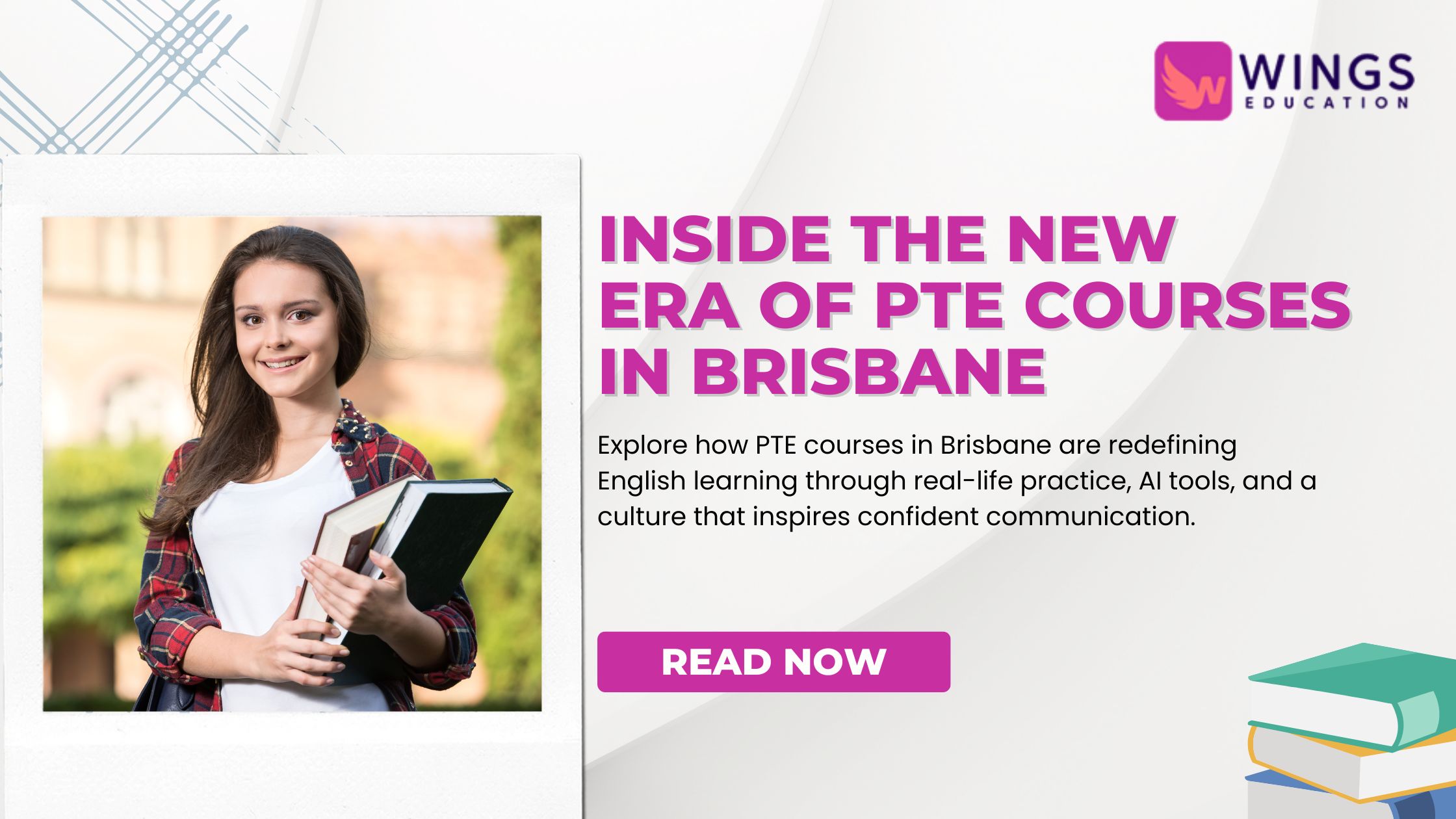
Cultural Diversity in Gold Coast: Enhancing PTE Learning Experiences
Discover how cultural diversity in PTE Gold Coast classes boosts language skills, resilience, and real-world communication for the exam and beyond.
The Gold Coast has long been celebrated for its sunny beaches, vibrant nightlife, and stunning coastal landscapes. But beyond the surf and skyline lies a thriving educational hub attracting students from around the world. In 2025, preparing for the Pearson Test of English (PTE) on the Gold Coast has evolved into an experience that goes far beyond traditional classroom study. PTE Gold Coast programs are increasingly shaped by cultural diversity, transforming language learning into an immersive, dynamic journey.
This diversity isn’t just a backdrop—it actively enhances learning. When students from different countries, speaking varied English accents and bringing unique cultural perspectives, come together, the classroom transforms into a microcosm of the global community. For learners, this means every interaction becomes a learning opportunity, preparing them not just for the exam but for real-world communication.
Accent Awareness as a Skill, Not a Barrier
One of the most unique aspects of PTE Gold Coast classes is how they turn multiple accents into an advantage rather than a challenge. Students are exposed to English spoken in Australian, British, Indian, Chinese, Middle Eastern, and South American accents. Initially, this diversity can feel overwhelming—understanding every pronunciation requires focus and patience.
However, modern classrooms leverage this challenge as a skill-building exercise. Students practice “accent agility,” learning to identify keywords, intonation patterns, and contextual cues. Listening exercises are deliberately designed to include varied speech patterns, training the ear to comprehend English regardless of accent. This isn’t just beneficial for the listening module of the PTE; it’s a practical skill for workplace and academic communication where colleagues, patients, or classmates may speak English differently.
One student recalled struggling to follow a peer from Brazil during a speaking exercise. By the end of the session, not only had they understood each other perfectly, but the experience boosted their confidence in handling any accent—an invaluable skill in a multicultural environment.
Storytelling as a Core Learning Tool
In PTE Gold Coast classes, storytelling has emerged as a surprisingly effective strategy for improving fluency and coherence. Students are encouraged to share personal anecdotes, cultural experiences, or professional stories during speaking exercises. Unlike rote repetition, storytelling engages memory, creativity, and critical thinking simultaneously.
For example, a student from India might describe a traditional festival, while a classmate from Germany narrates a university project experience. In responding to each story, learners practice summarizing, asking questions, and paraphrasing ideas in real-time. These exercises help students develop natural speech rhythm, appropriate intonation, and vocabulary use—all critical for the speaking module.
Additionally, storytelling fosters interpersonal skills. Students learn to maintain the listener’s attention, anticipate questions, and clarify meaning, transforming exam preparation into real-world communication practice. Over time, these sessions help learners express themselves with confidence, turning nervous or mechanical speech into engaging dialogue.
Peer Feedback Loops
Another unique advantage of multicultural classrooms is the dynamic peer feedback system. Instead of relying solely on teachers, students evaluate each other’s speaking and writing performances. Because learners come from different linguistic and cultural backgrounds, feedback is often insightful and varied.
For instance, a Japanese student reviewing a Mexican classmate’s essay might notice subtle issues with sentence flow, while the teacher may focus on grammar. These peer insights expose learners to diverse perspectives on language use and clarity, helping them refine their own skills. Feedback loops like these create a collaborative environment where students learn not just from instruction but from observation, discussion, and constructive critique.
This method also nurtures empathy and communication skills. Offering and receiving feedback requires careful articulation, diplomacy, and attention to detail—soft skills that are crucial not only for the PTE but for academic and professional life.
Contextual Vocabulary Development
Vocabulary learning in traditional classrooms often involves memorizing lists of words with little emphasis on application. PTE Gold Coast programs take a different approach by teaching words and phrases in context. Students encounter idiomatic expressions, workplace terminology, and culturally relevant language that mirrors real-life communication.
For example, a writing task might ask students to summarize a workplace report, discuss a university lecture, or explain a cultural practice. This approach reinforces understanding and retention because learners see how words function in sentences, conversations, and professional scenarios. It also improves reading comprehension, listening, and speaking, making students more adaptable and versatile—skills that the PTE exam heavily rewards.
Contextual learning is particularly useful for non-native speakers who might otherwise struggle with subtle differences in meaning, tone, or formality. By practicing vocabulary within realistic situations, students gain confidence and fluency that extends beyond exam walls.
Emotional Intelligence in Communication
One of the less obvious but crucial benefits of cultural diversity in PTE Gold Coast classrooms is the development of emotional intelligence (EI). Students constantly navigate misunderstandings, different communication styles, and nonverbal cues. Over time, they learn to gauge reactions, adjust tone, and clarify meaning effectively.
For instance, during a collaborative speaking exercise, a student might misinterpret a classmate’s question due to accent or phrasing. Instead of frustration, they learn to pause, listen carefully, and respond thoughtfully. This experience strengthens patience, empathy, and adaptability—soft skills that enhance speaking and listening performance in the PTE.
EI development also reduces test anxiety. When students become confident in interpreting intent, tone, and meaning, they approach exam tasks with composure, able to focus on clarity and accuracy rather than fear of miscommunication.
Cross-Cultural Critical Thinking
Cultural diversity doesn’t just improve language skills—it enhances critical thinking. In PTE Gold Coast classrooms, students are frequently exposed to opinions, perspectives, and reasoning methods different from their own. Responding to these requires analysis, evaluation, and synthesis, which directly benefits writing and reading modules.
For example, a discussion on workplace ethics might reveal contrasting approaches between countries. Learners must summarize viewpoints, argue logically, and present conclusions clearly—skills that translate directly into essay writing, summarizing, and multiple-choice reading tasks in the PTE. Cross-cultural critical thinking encourages students to approach questions from multiple angles, improving adaptability and problem-solving under exam conditions.
Immersive Cultural Simulations
Some PTE classes take immersion to the next level by creating simulations that replicate multicultural, real-world situations. Role-plays may mimic workplace scenarios, group university projects, or client-patient interactions. Students must respond spontaneously, often negotiating meaning with peers from different cultural backgrounds.
These simulations cultivate practical language use, quick thinking, and confidence. Students become accustomed to interpreting unfamiliar expressions, clarifying ambiguities, and maintaining fluency under pressure. By simulating real-life challenges, classes ensure learners are not just exam-ready but prepared for professional communication in multicultural environments.
Resilience Through Diversity
Finally, cultural diversity naturally builds resilience in ways that extend far beyond the classroom. In a PTE Gold Coast setting, students frequently encounter miscommunications, misunderstandings, and differing speech patterns—challenges that can initially feel frustrating. A simple group discussion can become a complex puzzle: accents clash, idiomatic expressions confuse, and interpretations of instructions vary. Yet, rather than discouraging learners, these moments become growth opportunities. Each misstep pushes students to slow down, listen carefully, clarify meaning, and adjust their responses in real-time. Over time, these repeated interactions cultivate patience, adaptability, and self-correction, forming habits that are essential not just for the PTE but for real-world English communication.
Consider a speaking exercise where a student explains a concept to peers from three different countries. Each listener may have a distinct accent and cultural reference, asking questions or interpreting information differently. The speaker must adapt mid-conversation, rephrase ideas, and remain fluent under pressure. By navigating these scenarios regularly, students internalize strategies for managing linguistic challenges, learning to improvise and communicate effectively even in unfamiliar or high-pressure situations.
This resilience significantly impacts PTE Gold Coast performance. Test anxiety, often one of the biggest hurdles for candidates, diminishes when learners have experienced the unpredictability of real-life communication in a supportive, multicultural environment. Mistakes are reframed as learning moments rather than failures, allowing students to approach the exam with calm confidence and strategic thinking. Beyond exam results, these traits translate seamlessly into workplaces, universities, and social interactions, where understanding, adapting, and connecting with people from diverse backgrounds is a daily necessity. In essence, the challenges posed by a multicultural classroom become a training ground for lifelong communication skills, fostering confidence, composure, and the ability to thrive in any English-speaking context.
Conclusion
The Gold Coast has evolved into more than a beautiful city—it has become a hub of multicultural learning that enriches PTE preparation. PTE Gold Coast classes leverage cultural diversity to develop not only language proficiency but also listening skills, critical thinking, emotional intelligence, and real-world adaptability.
From accent agility and storytelling to peer feedback, contextual vocabulary, and immersive simulations, each aspect of the classroom experience is designed to prepare students for success beyond the exam. Learners leave with more than a PTE score; they gain the confidence, flexibility, and communication skills required to thrive in multicultural academic and professional environments.
In 2025, the lesson is clear: the richest preparation happens not in isolation but in a vibrant, diverse, and interactive community where every voice teaches something new. For students on the Gold Coast, this diversity is not a challenge—it is the secret to mastering English and excelling in the PTE.























